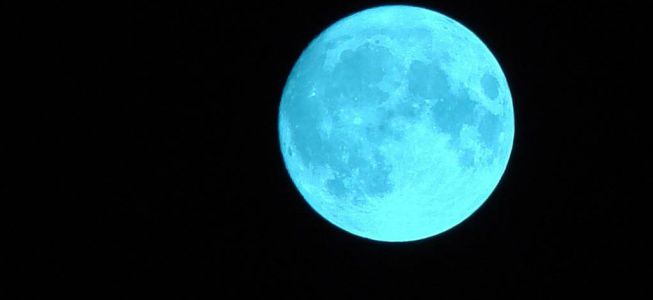The Blue Moon to be Visible Worldwide Tonight
The blue moon, or second full moon in the same month, will be visible tonight worldwide. The next one will be in January 2018.
On the night of July 31, almost everyone will take the opportunity to look up at the sky, in good company, and say goodbye or welcome the well-deserved summer vacation.
10 Things You Didn't Know About the Blue Moon:
1. The term 'blue moon' refers to the second of two full moons that appear in the same calendar month.
2. It is of more importance to astrologers than astronomers, marking a time of change and possibilities.
3. The ballad, Blue Moon, is one of the most catchy songs ever written. Composed by Richard Rodgers and Lorenz Hart in 1934, it was a hit on three occasions and covered by Elvis Presley in 1956.
4. There is a calendar of blue moons. The last one took place on August 31, 2012, and the next one will be in three years on January 31, 2018.
Lunar phase 6. Tonight, July 31, fits the definition of a 'blue' calendar because there was another full moon on July 2.
5. To make things more complicated, there is a different definition called "seasonal" which states that a blue moon is the third of four full moons in a season. According to this definition, this full moon is not 'blue'. The next seasonal blue moon would not occur until May 26, 2016.
6. We will see it silver or gray. Only occasionally can the moon actually be blue - but normally it has to be near a volcanic eruption to see such a phenomenon.
7. In 1883, blue moons appeared almost every night after the Indonesian volcano Krakatoa exploded with the force of a nuclear bomb, and its ash acted as a filter in the atmosphere, allowing only the blue light of the moon to pass through the small suspended particles.
8. Blue moons were also seen in the same year, 1983, following the eruption of the volcano El Chichón in Mexico. There were also reports of blue moons caused by volcanic eruptions of Mount St. Helens and Mount Pinatubo in 1980 and 1991.
9. Forest fires that produce smoke with microscopic ash particles can also create a blue moon, for the same reason as volcanic ashes.
10. Blue moons occur because of the difference between our calendar and lunar months. While a calendar month lasts 28-31 days, the time interval between two full moons is always 29.53 days long.
Blue Moon live performance, by The Marcels

